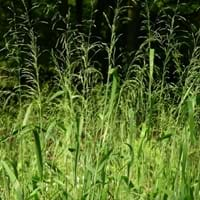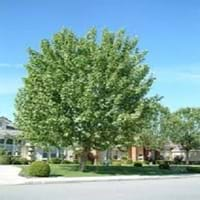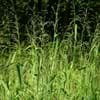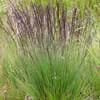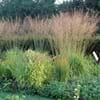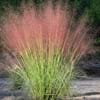Life Span
Perennial
Perennial
Origin
United States, Northeastern United States, Mid-Atlantic United States, Southeastern United States, North-Central United States, Central United States, South-Central United States, Canada
California
Types
Not Available
American Sycamore, Arizona Sycamore
Number of Varieties
Not Available
Habitat
Damp shady woods
Floodplains, River side, Stream side
USDA Hardiness Zone
5-9
3-8
Sunset Zone
3b, 4, 5, 6, 7, 8, 9, 14, 15, 16, 17
4, 5, 6, 7, 8, 9, 10, 11, 12, 13, 14, 15, 16, 18, 20, 21, 22, 23, 24
Habit
Clump-Forming
Upright/Erect
Flower Color
Not Available
Yellow
Flower Color Modifier
Bicolor
Bicolor
Fruit Color
Not Available
Sandy Brown
Leaf Color in Spring
Green, Light Green
Light Green
Leaf Color in Summer
Light Green
Light Green
Leaf Color in Fall
Green, Light Green, Yellow green
Sandy Brown
Leaf Color in Winter
Not Available
Not Available
Leaf Shape
Long Linear
Toothed
Plant Season
Summer, Fall
Not Available
Sunlight
Partial Sun, Partial shade
Full Sun, Partial Sun
Type of Soil
Clay, Loam
Clay, Loam, Sand
The pH of Soil
Acidic, Neutral
Acidic, Neutral
Soil Drainage
Average
Average
Bloom Time
Summer, Late Summer
Not Available
Tolerances
Wet Site
Wet Site, Drought
Where to Plant?
Container, Ground, Pot
Ground
How to Plant?
Divison, Seedlings
Seedlings, Stem Planting, Transplanting
Plant Maintenance
Medium
Medium
Watering Requirements
Requires a lot of watering
Keep the ground moist but not water-logged, Never Over-water
In Summer
Lots of watering
Lots of watering
In Spring
Moderate
Moderate
In Winter
Average Water
Average Water
Soil pH
Acidic, Neutral
Acidic, Neutral
Soil Type
Clay, Loam
Clay, Loam, Sand
Soil Drainage Capacity
Average
Average
Sun Exposure
Partial Sun, Partial shade
Full Sun, Partial Sun
Pruning
Remove dead or diseased plant parts
Prune in the late winter or spring, Remove damaged leaves, Remove dead leaves, Remove hanging branches, Remove short branches, Remove short twigs
Fertilizers
All-Purpose Liquid Fertilizer, fertilize in growing season
All-Purpose Liquid Fertilizer
Pests and Diseases
Pests and diseases free, Red blotch
Red blotch
Plant Tolerance
Drought
Drought
Flowers
Insignificant
Insignificant
Flower Petal Number
Single
Not Available
Foliage Texture
Medium
Coarse
Foliage Sheen
Matte
Matte
Attracts
Not Available
Not Available
Allergy
Not Available
Asthma, Eye irritation, Skin irritation
Aesthetic Uses
Ground Cover, Showy Purposes
Beautification, Landscape Designing, Showy Purposes
Beauty Benefits
Not Available
Not Available
Environmental Uses
Air purification
Air purification
Medicinal Uses
No Medicinal Use
Cold, Cough, Dysentry, Pain killer
Part of Plant Used
Whole plant
Fruits
Other Uses
Not Available
Decoration Purposes, Showy Purposes, Used as Ornamental plant
Used As Indoor Plant
No
No
Used As Outdoor Plant
Yes
Yes
Garden Design
Wildflower
Shade Trees
Botanical Name
MILIUM effusum
PLATANUS racemosa
Common Name
Millet Grass, Wood Millet
California Sycamore
In Hindi
Milium effusum
कैलिफोर्निया गूलर
In German
Wald-Flattergras
California sycamore
In French
millet étalé
californie sycomore
In Spanish
effusum milium
california sicómoro
In Greek
milium effusum
Καλιφόρνια συκομουριά
In Portuguese
milium effusum
califórnia sicômoro
In Polish
prosownica rozpierzchła
california jawor
In Latin
milium effusum
california sycomoros
Phylum
Magnoliophyta
Magnoliophyta
Class
Liliopsida
Magnoliopsida
Order
Cyperales
Proteales
Family
Poaceae
Platanaceae
Clade
Angiosperms, Commelinids, Monocots
Angiosperms, Eudicots
Tribe
Not Available
Not Available
Subfamily
Not Available
Not Available
Number of Species
Not Available
Season and Care of Milium Effusum and California Sycamore
Season and care of Milium Effusum and California Sycamore is important to know. While considering everything about Milium Effusum and California Sycamore Care, growing season is an essential factor. Milium Effusum season is Summer and Fall and California Sycamore season is Summer and Fall. The type of soil for Milium Effusum is Clay, Loam and for California Sycamore is Clay, Loam, Sand while the PH of soil for Milium Effusum is Acidic, Neutral and for California Sycamore is Acidic, Neutral.
Milium Effusum and California Sycamore Physical Information
Milium Effusum and California Sycamore physical information is very important for comparison. Milium Effusum height is 45.70 cm and width 45.70 cm whereas California Sycamore height is 1,830.00 cm and width 1,520.00 cm. The color specification of Milium Effusum and California Sycamore are as follows:
Milium Effusum flower color: Not Available
Milium Effusum leaf color: Green and Light Green
California Sycamore flower color: Yellow
- California Sycamore leaf color: Light Green
Care of Milium Effusum and California Sycamore
Care of Milium Effusum and California Sycamore include pruning, fertilizers, watering etc. Milium Effusum pruning is done Remove dead or diseased plant parts and California Sycamore pruning is done Prune in the late winter or spring, Remove damaged leaves, Remove dead leaves, Remove hanging branches, Remove short branches and Remove short twigs. In summer Milium Effusum needs Lots of watering and in winter, it needs Average Water. Whereas, in summer California Sycamore needs Lots of watering and in winter, it needs Average Water.
